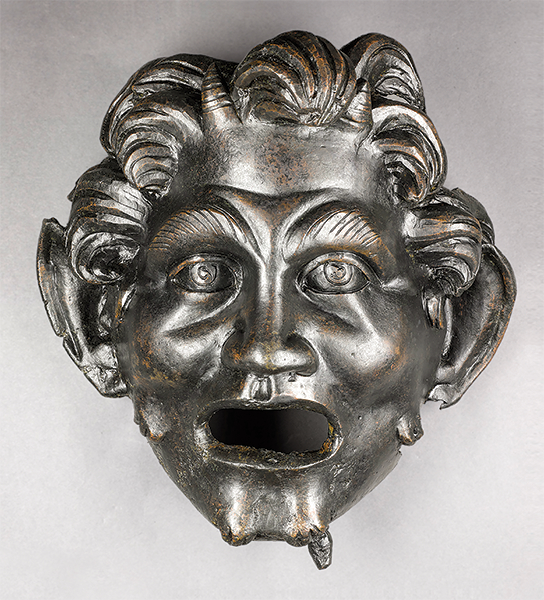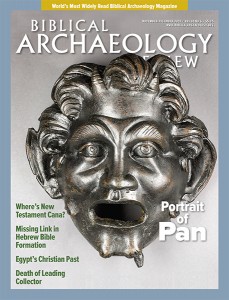
“You have never seen such a find!” yelled Alexander Iermolin at Antiochia Hippos (Sussita),a located a thousand feet above the Sea of Galilee. A group of 15 of us were excavating the site’s outworks in November 2014.
We hurried over as Alexander pulled out a large piece of metal covered in dirt near one of the basalt tower walls. After a few seconds, we realized that we were looking at a face. We removed some dirt from the metal and recognized a large bronze mask of the Greek god Pan (Faunus in the Roman pantheon) or possibly a satyr (a mythological creature resembling a man with equine or goat-like features). The face stared back at us with glazed, furious—almost tragic—eyes and a gaping mouth.
We marveled at the size of the mask—and its quality. Perhaps we should not have been surprised, however, because Hippos was a flourishing polis of the Decapolis during the Roman period.
Located east of the Sea of Galilee on the crest of Sussita Mountain, Hippos was founded around the middle of the second century B.C.E. by the Seleucids. The Greeks named the site Antiochia Hippos (“hippos” is Greek for “horse”).
Already a library member? Log in here.
Institution user? Log in with your IP address.

